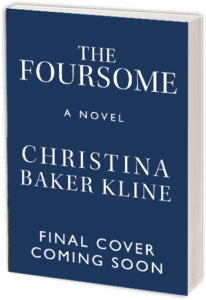 At the Globe Theatre in London last week, a professor from Rosehampton University gave a short lecture about Romeo and Juliet before the production began. In discussing the origins of the play the professor said, as an aside, “Of course, as we all know, Shakespeare didn’t invent anything. All of his plays were based on stories that would’ve been familiar to audiences at the time.”
At the Globe Theatre in London last week, a professor from Rosehampton University gave a short lecture about Romeo and Juliet before the production began. In discussing the origins of the play the professor said, as an aside, “Of course, as we all know, Shakespeare didn’t invent anything. All of his plays were based on stories that would’ve been familiar to audiences at the time.”
I was musing about this when I got the following email from a novelist friend: “I am struggling so on my new novel … I cannot find my way into the story, which breaks my heart, but I cannot give it up, either. Do you have any tip for finding your way into a very thorny story?”
As everyone knows who has read this piece about the trouble I had writing my new novel, I am quite familiar with this problem. So here’s something that worked for me. While writing both The Way Life Should Be and Bird in Hand, I studied novels that successfully achieved something that I wanted to do – and essentially copied their strategies.
When I was writing The Way Life Should Be I wanted the story to move really quickly; I wanted to begin scenes in the middle. I’d just read The Lovely Bones and admired how Alice Sebold varied her chapter openings and seemed to jump right into the action in each new scene. So I literally wrote the first few words of each scene in Sebold’s book in a notebook. Then, when I was stuck, I looked at the list of scene openings for inspiration. I didn’t actually copy her words, but I found that this list of phrases triggered my own ideas for starting in the middle.
Here’s another example. Writing Bird in Hand, I was obsessed for a time with Michael Cunningham’s novel The Hours. I loved the multiple points of view and the paradoxically intimate but slightly detached voice(s). Bird in Hand is nothing like that book, but I was influenced, in writing it, by how Cunningham achieved a kind of patient unfolding. The scene in my novel with Ben in the flower shop is my secret homage to Cunningham – and of course to Virginia Woolf’s Mrs. Dalloway … which provided the inspiration and the source material for The Hours.

